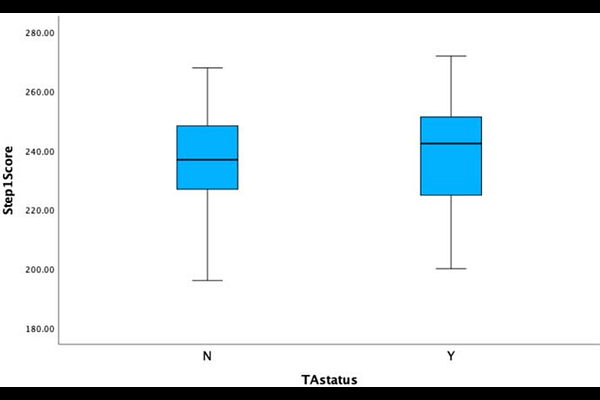Serving as an anatomy laboratory teaching assistant does not improve USMLE Step 1 performance

Serving as an anatomy laboratory teaching assistant does not improve USMLE Step 1 performance
Pascoe, M. A.
AbstractPurpose: Teaching can enhance the teacher\'s learning through retrieval practice, elaboration, and metacognitive engagement. In anatomy education, near-peer teaching roles such as laboratory teaching assistants (TAs) may therefore benefit not only learners but also the instructors. This study investigated whether serving as an anatomy TA is associated with improved performance on the United States Medical Licensing Examination (USMLE) Step 1. Methods: Sixty second-year medical students were identified who served as anatomy TAs in a donor-based physical therapy course over seven academic years. Each was matched to a peer from the same graduating class with similar anatomy course performance but no TA experience. De-identified Step 1 scores were obtained from institutional records. An independent samples t-test compared Step 1 scores between groups. Results: The mean Step 1 score was 238.0 (SD = 19.7) for TAs and 236.1 (SD = 16.5) for matched controls. This difference was not statistically significant (t(118) = 0.573, p = 0.568). Conclusions: Medical students who served as anatomy TAs did not perform significantly better on the USMLE Step 1 than their peers. These findings suggest that, under the conditions of this study, participation in a near-peer teaching role did not translate into measurable gains on standardized testing. Educators should consider that while teaching may support professional development and anatomical understanding, additional instructional design elements may be needed to align these experiences with exam-related learning outcomes.